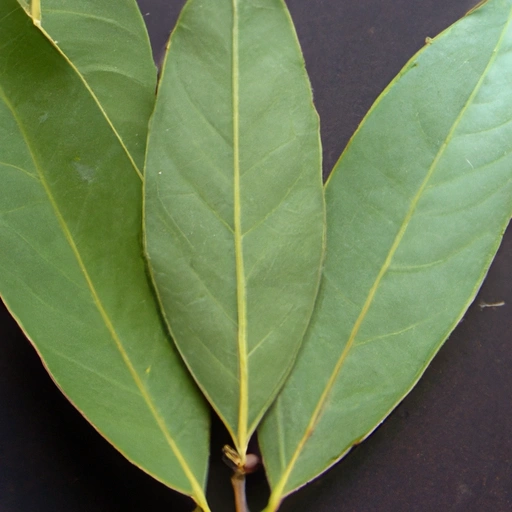Salam Leaf
Description

Salam leaf, also known as Indonesian bay leaf, is an aromatic leaf used in cooking, derived from the tree Syzygium polyanthum. It is highly regarded in Southeast Asian cuisine for its distinctive fragrance and flavor, which is less potent than the Mediterranean bay leaf but offers a unique eucalyptus-like aroma with a hint of cinnamon. Salam leaf is not commonly found in mainstream American or European grocery stores but can be sourced from specialty Asian markets. In recipes, salam leaf is often used in measures of whole leaves, teaspoons (tsp) for ground leaves, or grams (g) and ounces (oz) for dried leaves.
Common uses
Salam leaf is commonly used in Indonesian, Malaysian, and Javanese cooking, where it is added to soups, stews, curries, and rice dishes to enhance flavor. It is also often featured in traditional sauces and spice pastes.
Nutritional value
Calories
Salam leaves contain minimal calories, making them a suitable addition to any diet.
Protein
These leaves are not a significant source of protein.
Fat
Salam leaves have negligible fat content.
Carbohydrates
The carbohydrate content of salam leaves is low, primarily consisting of dietary fiber.
Vitamins
While not rich in vitamins, salam leaves may contain trace amounts of vitamin A and C.
Minerals
Salam leaves are known to have trace minerals such as calcium, potassium, and magnesium.
Health benefits
Salam leaf has been traditionally used for its antimicrobial and anti-inflammatory properties. It is believed to help in digestion and could have benefits for blood sugar management, although scientific evidence is limited.
Potential risks
As with many herbs, salam leaf is generally safe when used in culinary amounts. However, individuals with specific allergies to leaves in the myrtle family should exercise caution.
Common recipes
Salam leaf is a key ingredient in Indonesian rendang, a slow-cooked spiced meat dish. It is also used in various soups, such as Indonesian soto, and in braised dishes like semur.
Cooking methods
The leaves are usually added whole to dishes and removed before serving. They can be used fresh or dried and are sometimes ground into a powder for spice blends.
Pairing with other ingredients
Salam leaves pair well with ingredients like lemongrass, galangal, ginger, and coconut milk, forming the foundation of many Southeast Asian flavor profiles.
Summary
Salam leaf is an aromatic culinary herb primarily used in Indonesian and Southeast Asian cuisine. It imparts a unique flavor that enhances the taste of traditional dishes such as rendang and soto. With its potential health benefits and minimal calories, salam leaf is an exotic addition to the spice cabinet for adventurous cooks around the world.